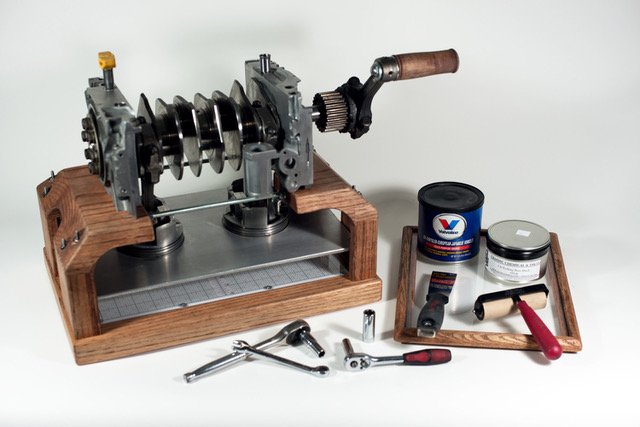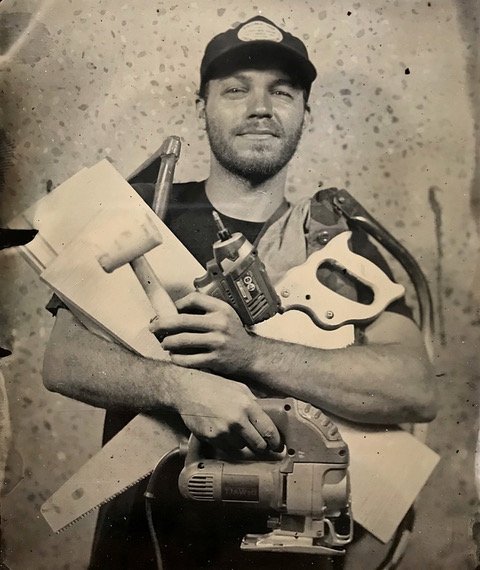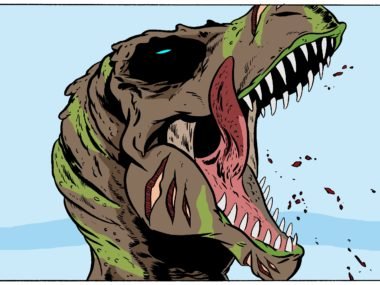Nick Osetek / Subaru Piston Press does drawings, illustrations, fine-art prints and fabrications! He is currently honing his pen and ink drawing while studying sustainable forms of printmaking, including a custom printing press that he repurposed from a damaged car engine; the Subaru Piston Press.
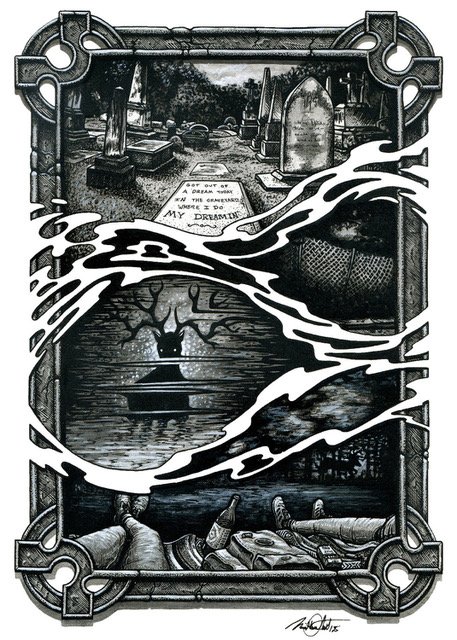
STL SPEX (Rachel): What are your artistic influences?
Most of my inspiration is found in dark and macabre elements of nature, organic and mechanical parts that make up a whole, and the disease and decay that break them down. I’m fortunate to have parents who let me scour the horror and science fiction aisles of Blockbuster as a kid but also made names such as Chase, Carson, Murray, and Pryor, among other comedic influences, staples in our VHS collection. I’m fascinated by myth, the concept of nostalgia, and I enjoy visually recording texture and value in objects that normally go unappreciated. As far as influential artists go, I’ve followed the narratively dark arts of Alex Pardee and Greg ‘Craola’ Simkins since 2010 and have developed an illustrative style inspired by their work; notably, ’The Day I Killed My Father’ (Pardee) and ‘Feeders’ (Simkins). It wasn’t until I ran across the work of Aaron Horkey that everything in my process evolved. Due to strain and an overall lack of enthusiasm, I had abandoned detailed drawing through undergrad to focus on printmaking. Once I discovered Horkey’s level of craft and his ability to build illusions of light and shadow through ink, line, and dot, I was hooked. His work not only helped me rediscover my passion for detail in drawing but also to realize that there is an audience and an appreciation for the style of work that speaks to me directly.
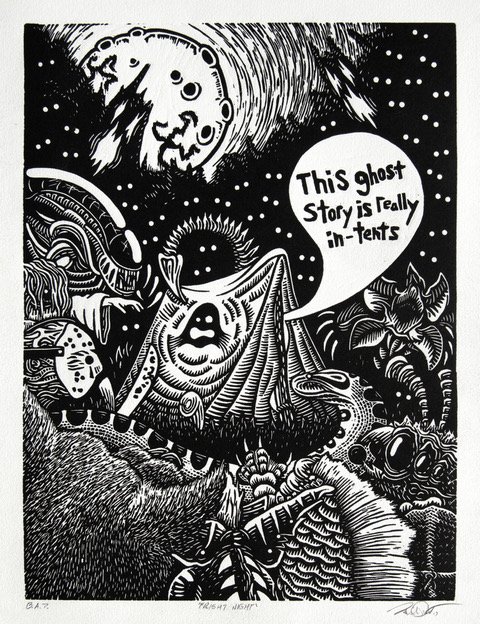
STL SPEX: Your work ranges from relatively realist to very surreal – how do you make decisions about which direction to go when you’re working on a piece?
The decision usually occurs before any sketching, while the idea is still floating around in my head and typically depends on how I visualize the work and the emotion or perspective I want to portray. Some of my work can be very dark and serious, other times it can humorous and cartoonish. Another decisive factor is if the work is a personal piece or a commission. The more photo-realistic works that I’ve created in the past have been reproductions for clients. When it comes to personal work, I like to loosen up and employ elements of distortion, personification and skew planes of field. Whether the work leans towards real or surreal, applying detail, texture, and rendering have always been important factors as I aim to reproduce what I can see.

STL SPEX: Along the same lines, many of your pieces incorporate natural objects and human-made ones – what’s the significance of this hybridity?
I believe the hybridity relates more to my 3D work when working with physical, tangible objects. I spent my childhood drowning in Legos and considering my experience in the maintenance field, I’m drawn to the individual parts and pieces that constitute a whole. Whether they’re biological or mechanical systems, I enjoy breaking them down into smaller, working parts. I think it has to do with visualizing the bigger picture and appreciating the individual components or efforts that contribute to making it happen. Doing so, I see both natural and human-made components as simply parts that can be replaced and swapped interchangeably. When it comes to creating 3D work, I enjoy spilling all of my options onto the floor and figuring out how I can blend, adapt and repurpose various parts into one.
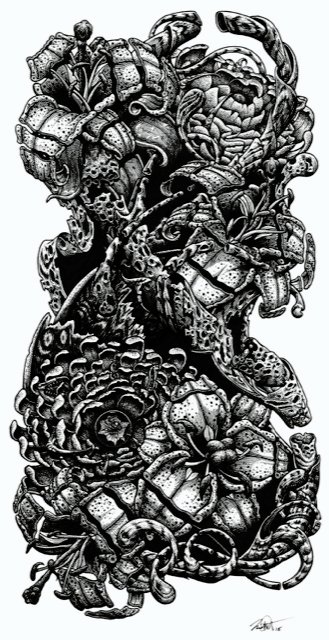
STL SPEX: On your website, you describe the mechanics of the Subaru Piston Press. Why did you decide to use a car engine to create your press and what drew you to that specific engine?
The press was originally built for the 2017 Southern Graphics conference in Atlanta and the build was essentially a challenge to create something unique rather than bring a conventional press setup. The idea to use a car engine stemmed from years of restoring classic cars and rebuilding V8 engines. Upon taking printmaking classes in college, I gained an interest in the printing presses themselves and noticed a correlation of how both machines create and use pressure. My mindset behind the build was more “freak mechanical experiment” than “reliable mobile press” and I had no clue if it would actually work. It all came together the night before the conference and I didn’t get a chance to test run the thing before hitting the road for Atlanta. I wasn’t originally looking for a Subaru engine, it kind of fell into my lap. I hadn’t considered a lightweight aluminum, horizontally opposed motor because I had never worked on one. I was looking for a cast iron motor that I was familiar with; a V8 Chevy, Ford or an AMC and had no luck with the shops in town. In a last-ditch effort, I dropped a WANTED ad on craigslist for scrap motors and got a reply about a cracked Subaru engine. I picked it up for $20 and it, fortunately, needed less modification, weighed far less and worked more efficiently for the build than the original V8’s I had been hunting for.
